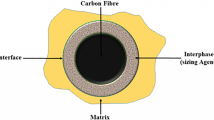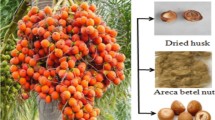Abstract
A novel phenolic rigid organic filler (KT) was used to modify isotactic polypropylene (iPP). The influence of KT particles on the impact resistance property of PP/KT specimens (with similar interparticles distance, 1.8 μm) was studied by notched izod impact tests. It was found that the brittle-ductile transition (BDT) of the PP/KT microcomposites took place at the filler content of about 4%, and the impact strength attains the maximum at 5% (with filler particles size of 1.5 μm), which is about 2.5 times that of unfilled iPP specimens. The impact fracture morphology was investigated by scanning electron microscopy (SEM). For the PP/KT specimens and the highdensity polyethylene/KT (HDPE/KT) specimens in ductile fracture mode, many microfibers could be found on the whole impact fracture surface. It was the filler particles that induced the plastic deformation of interparticles ligament and hence improved the capability of iPP matrix on absorbing impact energy dramatically. The determinants on the BDT were further discussed on the basis of stress concentration and debonding resistance. It can be concluded that aside from the interparticle distance, the filler particles size also plays an important role in semicrystalline polymer toughening. Keywords rigid organic filler, polypropylene, impact
Similar content being viewed by others
References
Karger-Kocsis J, ed. Polypropylene: composites, London: Chapman & Hall, 1995. Chapter 1
Baker R A, Koller L L, Kummer P E. Handbook of fillers for plastics, 2nd ed. New York: Van Nostrand Reinhold, 1987
Thio Y S, Argon A S, Cohen R E, Weinberg M. Toughening of isotactic polypropylene with CaCO3 particles. Polymer, 2002, 43 (13): 3661–3674
Zuiderduin W C J, Westzaan C, Huétink J, Gaymans R J. Toughening of polypropylene with calcium carbonate particles. Polymer, 2003, 44(1): 261–275
Zhang Q X, Yu Z Z, Xie X L, Mai Y W. Crystallization and impact energy of polypropylene/CaCO3 nanocomposites with nonionic modifier. Polymer, 2004, 45(17): 5985–5994
Liang J Z, Li R K Y. Brittle-ductile transition in polypropylene filled with glass beads. Polymer, 1999, 40(11): 3191–3195
Wu X, Zhu X, Qi Z. The 8th International conference on deformation, yield and fracture of polymers. London: The Plastics and Rubber Institute, 1991:78/1
Muratoglu O K, Argon A S, Cohen R E, Weinberg M. Crystalline morphology of polyamide-6 near planar surfaces. Polymer, 1995, 36 (11): 2143–2152
Bartczak Z, Argon A S, Cohen R E, Kowalewski T. The morphology and orientation of polyethylene in films of sub-micron thickness crystallized in contact with calcite and rubber substrates. Polymer, 1999, 40(9): 2367–2380
Muratoglu O K, Argon A S, Cohen R E, Weinberg M. Toughening mechanism of rubber-modified polyamides. Polymer, 1995, 36(5): 921–930
Muratoglu O K, Argon A S, Cohen R E, Weinberg M. Microstructural processes of fracture of rubber-modified polyamides. Polymer, 1995, 36(25): 4771–4786
Wang Y, Fu Q, Li Q, Zhang G, Shen K, Wang Y Z. Ductile-brittletransition phenomenon in polypropylene/ethylene-propylene-diene rubber blends obtained by dynamic packing injection molding: A new understanding of the rubber-toughening mechanism. J Polym Sci: Polym Phys, 2002, 40(18): 2086–2097
Qi D M, Yang L, Wu M H, Lin H M, Nitta K H. Phenolic rigid organic filler/isotactic polypropylene composites. I. preparation. Frontiers of Chemical Engineering in China, 2008, 2(3): 236–241
Rong M Z, Zhang M Q, Zheng Y X, Zeng H M, Friedrich K. Improvement of tensile properties of nano-SiO2/PP composites in relation to percolation mechanism. Polymer, 2001, 42(7): 3301–3304
Jancar J, Dianselmo A. The yield strength of particulate reinforced thermoplastic composites. Polym Eng Sci, 1992, 32(18): 1394–1399
Fu Q, Wanh G, Shen J. Polyethylene toughened by CaCO3 particle: Brittle-ductile transition of CaCO3-toughened HDPE. J Appl Polym Sci, 1993, 49(4): 673–677
Chen S G, Hu J W, Zhang M Q, Rong M Z, Zheng Q. Time dependent percolation of carbon black filled polymer composites in response to solvent vapor. J Mater Sci, 2005, 40(8): 2065–2068
Wang K, Wu J S, Zeng H M. Microstructure and fracture behavior of polypropylene/barium sulfate composites. J Appl Polym Sci, 2006, 99(3): 1207–1213
Bikiaris D N, Papageorgiou G Z, Pavlidou E, Vouroutzis N, Palatzoglou P, Karayannidis G P. Preparation by melt mixing and characterization of isotactic polypropylene/SiO2 nanocomposites containing untreated and surface-treated nanoparticles. J Appl Polym Sci, 2006, 100(4): 2684–2696
Dubnikova I L, Berezina S M, Antonov AV. Effect of rigid particle size on the toughness of filled polypropylene. J Appl Polym Sci, 2004, 94(5): 1917–1926
Hutchinson J W. Crack tip shielding by micro-cracking in brittle solids. Acta metallurgica, 1987, 35(7):1605–1619
Bartczak Z, Argon A S, Cohen R E, Weinberg M. Toughness mechanism in semi-crystalline polymer blends: I. High-density polyethylene toughened with rubbers Polymer, 1999, 40 (9): 2331–2346; II. High-density polyethylene toughened with calcium carbonate filler particles. Polymer, 1999, 40(9): 2347–2365
Qi D M, Shao J Z, Wu M H, Nitta K H. Phenolic rigid organic filler/isotactic polypropylene composites. II. tensile properites. Frontiers of Chemical Engineering in China, 2008, 2(4): 396–401
Mccrum N G, Buckley C B, Bucknall C B. Principles of Polymer Engineering. New York: Oxford University Press, 1997
Author information
Authors and Affiliations
Corresponding author
Rights and permissions
About this article
Cite this article
Lin, H., Qi, D., Han, J. et al. Phenolic rigid organic filler/isotactic polypropylene composites. III. Impact resistance property. Front. Chem. Eng. China 3, 176–181 (2009). https://doi.org/10.1007/s11705-009-0203-8
Received:
Accepted:
Published:
Issue Date:
DOI: https://doi.org/10.1007/s11705-009-0203-8




